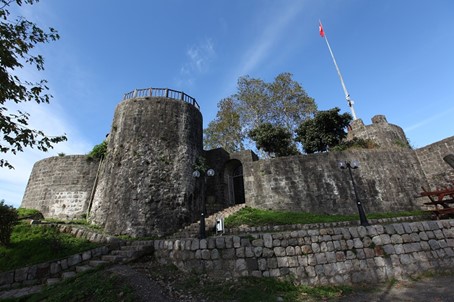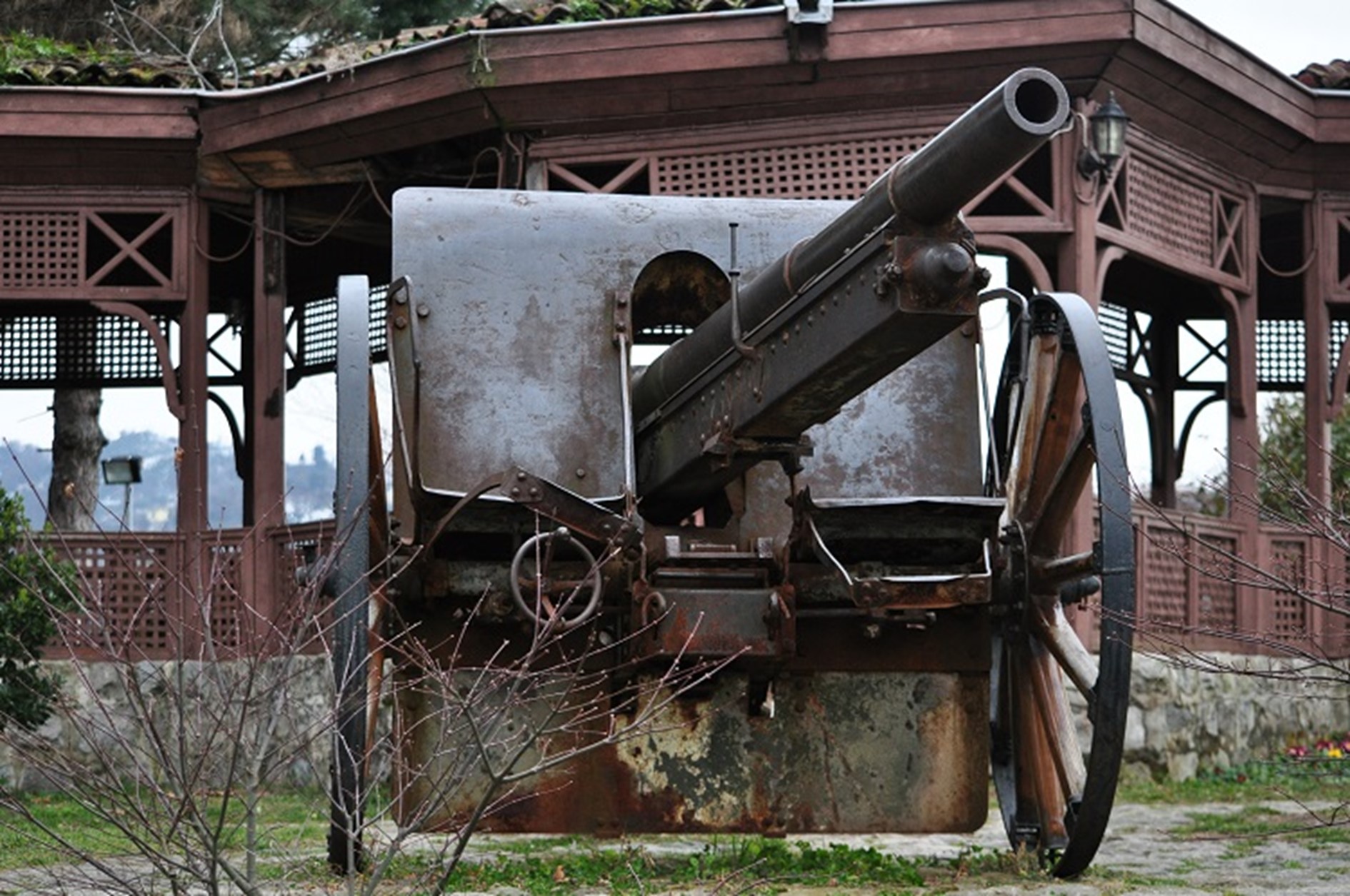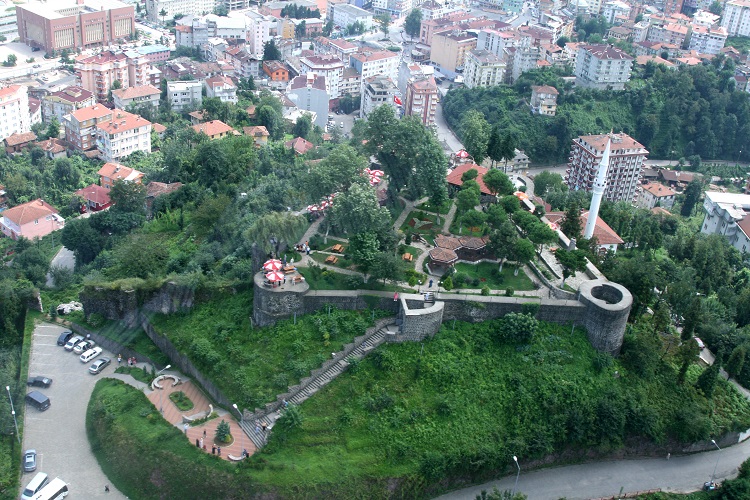Rize Castle is a historical structure located on a natural hill dominating the city, southwest of the city center of Rize, Türkiye. With its strategic location, the castle is one of the important cultural heritages of Rize.
Location and General Structure
The castle is situated southwest of the city center, on a natural hill approximately 150 meters high, covering an area of 480 square meters. The structure, which does not generally present a regular plan, consists of two main parts: the Inner Castle and the Lower Castle. Today, the castle and its surroundings are studied in more detail under four sections:
- Inner Castle
- Lower Castle
- The remains of the Outer Castle between the Inner Castle and Atatürk Street
- The walls east of the old SSK Hospital

Interior view of Rize Castle (Rize KTB)
History and Construction Process
It is thought that different parts of the castle were built during different periods:
- Inner Castle: The first construction phase is estimated to belong to the period of Byzantine Emperor Justinian I (527–565). It is also known that this section was used during the Genoese period and was rebuilt between 527 and 565.
- Lower Castle: According to written sources, it is thought to have been built in the 13th or 14th century.

Historical cannon view from Rize Castle (Rize KTB)
Architectural Features
The castle was built using the masonry construction system, with stone as the main material.
- -Inner Castle: Built of cut stone and rubble stone, the entrance of the Inner Castle is on the eastern side. This section contains five semicircular towers.
- Lower Castle: Surrounded by walls extending from the Inner Castle to the northeast and northwest towards the sea. Today, part of the western walls and some tower remains have survived. Research has revealed that there were a total of nine towers and two gates on these walls, the towers were two-storied, and brick material was also used in the walls.
- Walls and Towers: To strengthen the castle walls, supporting towers and defensive towers were built. The defensive towers, generally round in shape, are connected to the wall structures. Supporting towers, however, are square, rectangular, or round in shape and are built protruding outward to provide defense against the enemy from every direction. The wall height varies between approximately 2 meters and 20 meters (although one source mentions 20 cm, the general structure indicates 20 meters), and the wall thickness is about 2–3 meters. Cut stone and Horasan mortar were used as construction materials. The southern parts of the castle, restored in 1989, were built of cut stone.
Current Status and Use
The surroundings of Rize Castle have been arranged and are now operated as a public tea garden, offering an ideal panoramic point to view the city. Unfortunately, some collapsed parts of the walls have had reinforced concrete houses built on them, and a road passes over part of the visible walls. The castle also contains the memorial tomb of Ekrem Orhon, one of the former mayors of Rize.

Bird’s-eye view of Rize Castle (Rize KTB)
Restoration Works
Restoration works have been carried out by the Ministry of Culture and Tourism with the aim of preserving Rize Castle and transferring it to future generations. The castle was included in the Ministry’s investment program on August 22, 2011. Within this scope, surveying, restitution, restoration projects, as well as landscaping and lighting projects have been completed, and the implementation of the project has begun. Restoration is still ongoing.


